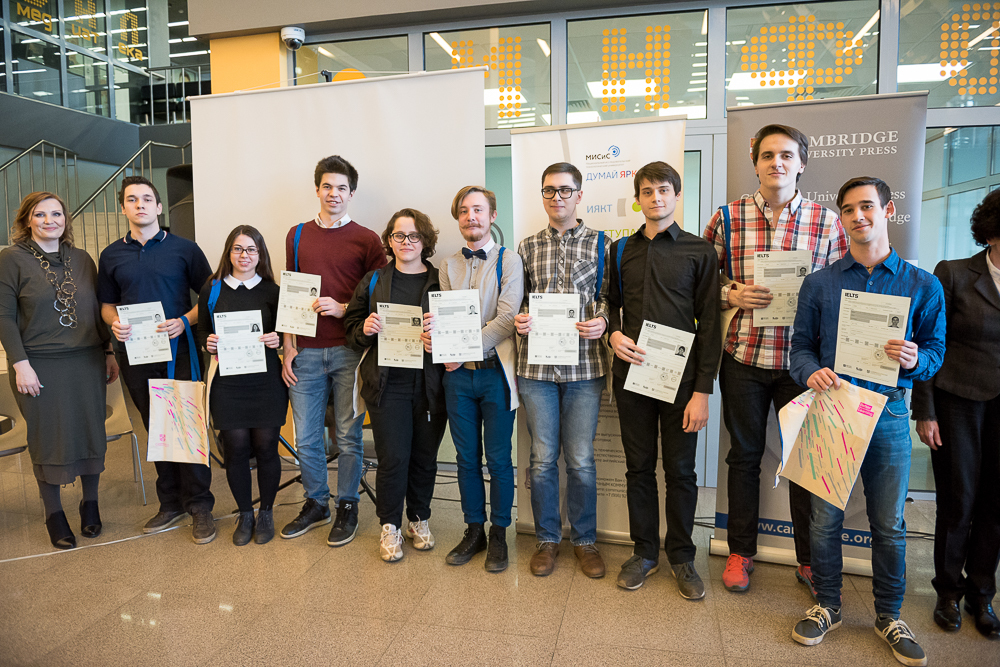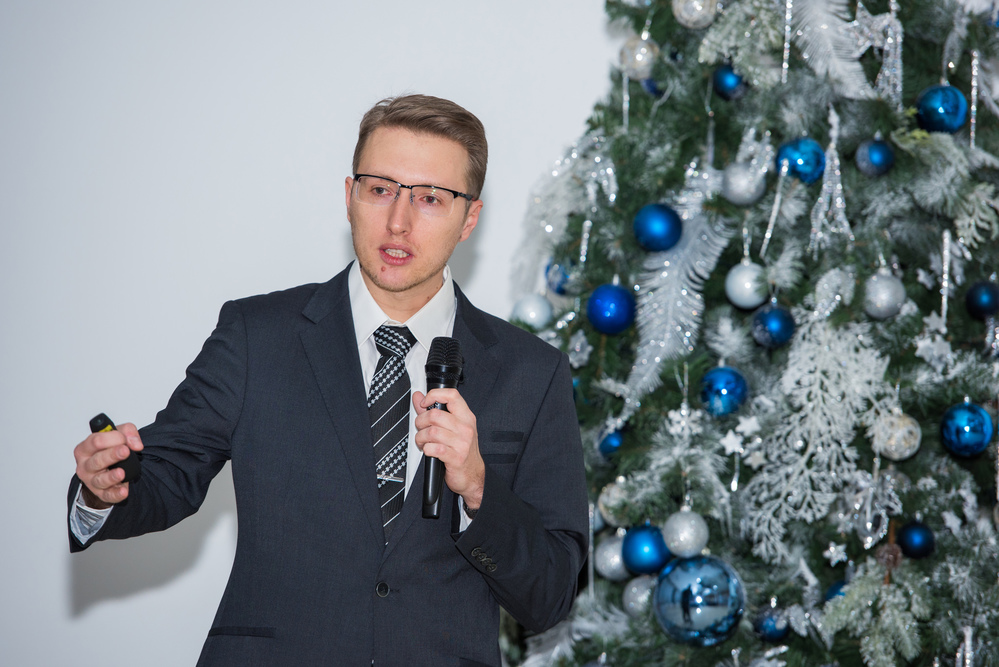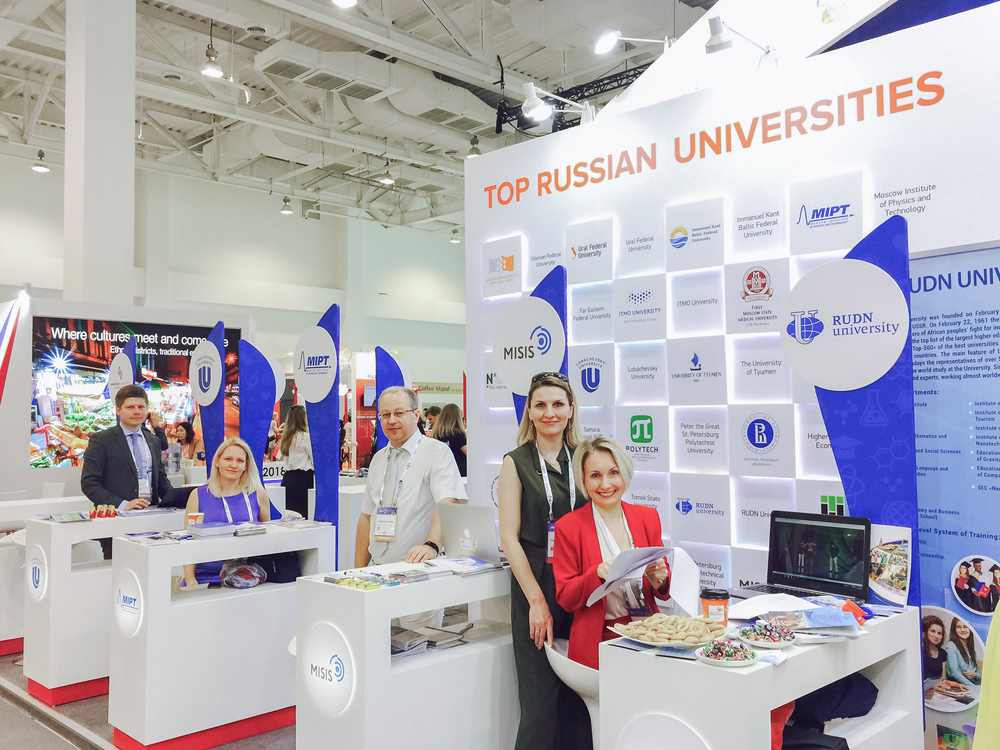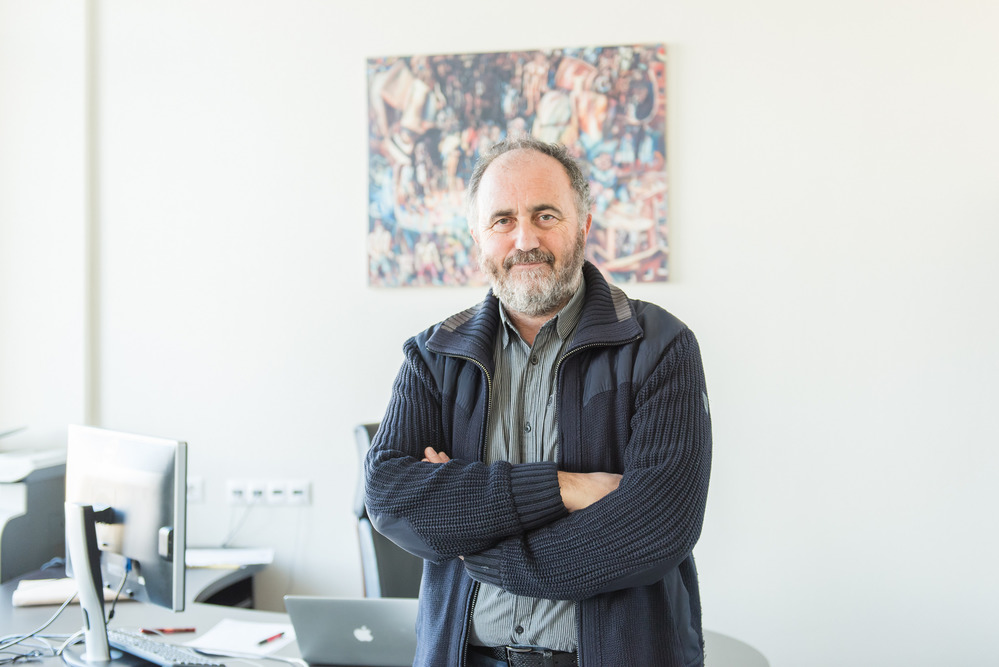NUST MISIS Students Receive IELTS Certificates
The fourth annual ceremony to award IELTS certificates to the university`s best students was recently held at NUST MISIS.
The fourth annual ceremony to award IELTS certificates to the university`s best students was recently held at NUST MISIS.

For the first time ever, the representative of a family of 2D substances — copper oxide — was experimentally obtained. The substance has already demonstrated some unusual properties which can not only expand the field of experiments with graphene, but also can set a new direction in microelectronics. An article on the achievement of the scientists from NUST MISIS, FSBI TISNCM, IBCP RAS, and international colleagues from NIMS (Japan) was published in the prestigious journal NanoScale.

NUST MISIS participates in the largest educational forum of the Asia-Pacific Region.

On March 17th, 2017, NUST MISIS presented the strategy of the University`s development at the meeting of The Council on Competitiveness Enhancement of Leading Russian Universities among Global Research and Education Centers. The strategy’s 2016 results, presented by NUST MISIS, received high praise from the Council`s experts.

Physicists have simulated the structure of a new material based on fullerite and single crystal diamond to show how this material can obtain ultrahigh hardness. This discovery allows the estimations the potential conditions for obtaining ultrahard materials. The results were published in the Carbon journal.

For the first time, NUST MISIS has entered the QS World University Rankings by Subject and is now featured in 4 of 46 subjects featured in this year`s edition: Engineering-Mineral & Mining, Materials Science, Physics & Astronomy, and Engineering-Mechanical, Aeronautical & Manufacturing. Among these four subjects, NUST MSIS ranked best in Engineering-Mineral & Mining, taking 31st among all universities in the ranking. Among all of the university-participants of Project

Humanity has faced a number of completely new problems when increasing the speed of transmitting information. Waves, flying through matter at high speeds, initiate the generation of secondary radiation, which interferes with a signal’s linear energy transmission, scattering it. Scientists at NUST MISIS are working to better understand, strengthen, and use this nonlinear system response. An article on the results of their studies has already been published in Scientific Reports.
